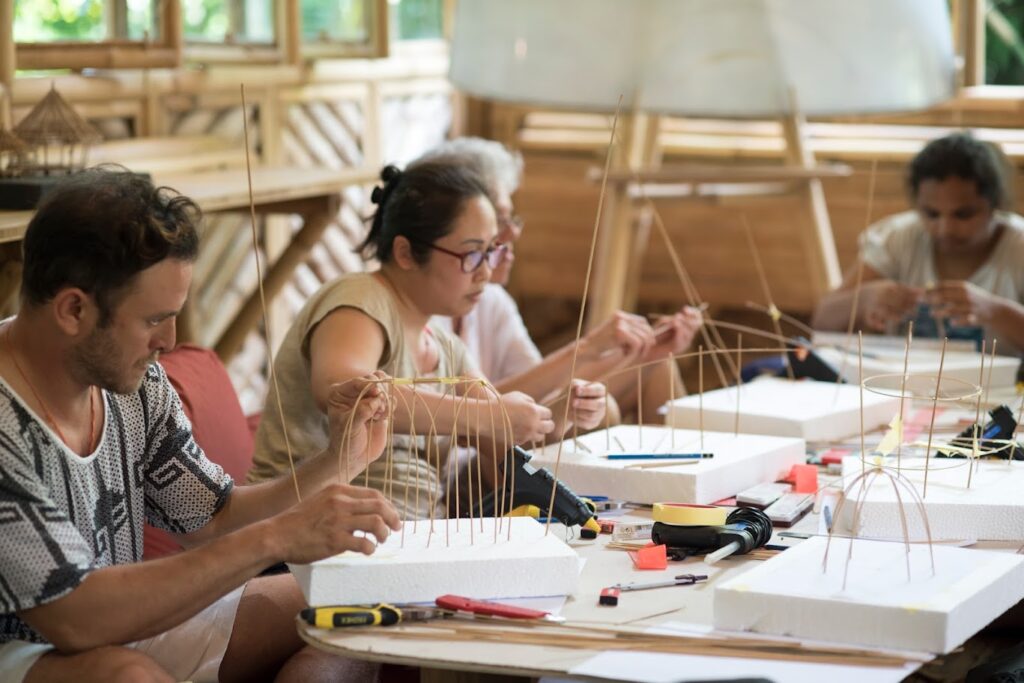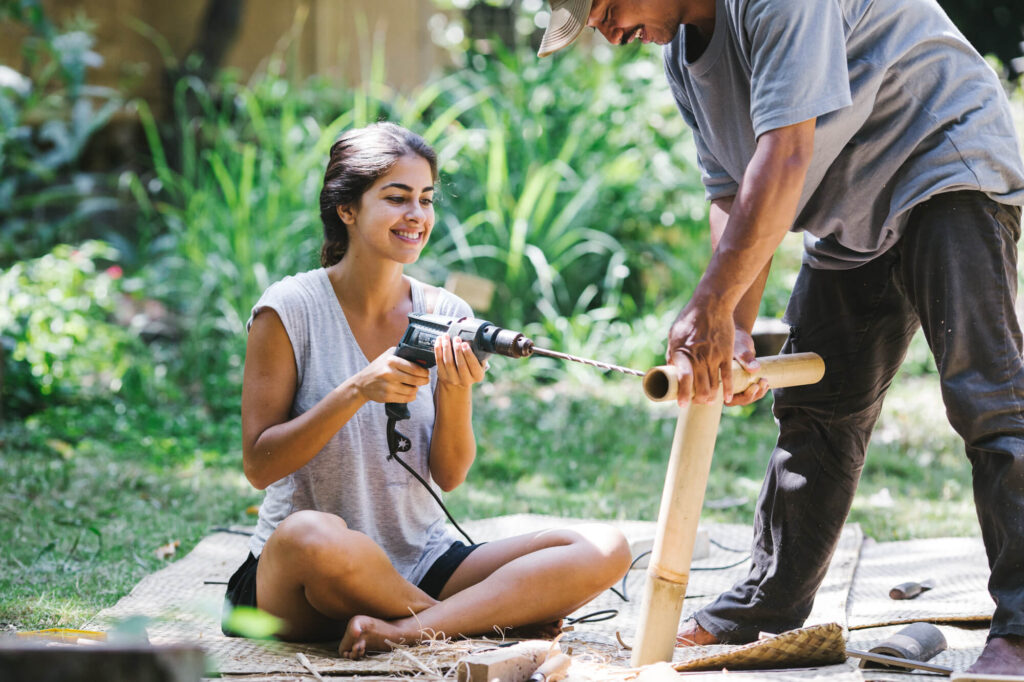The 5 Tools You Need For Traditional Bamboo Carpentry
By Cécile Durand | October 15, 2021 | Carpentry and Processing -
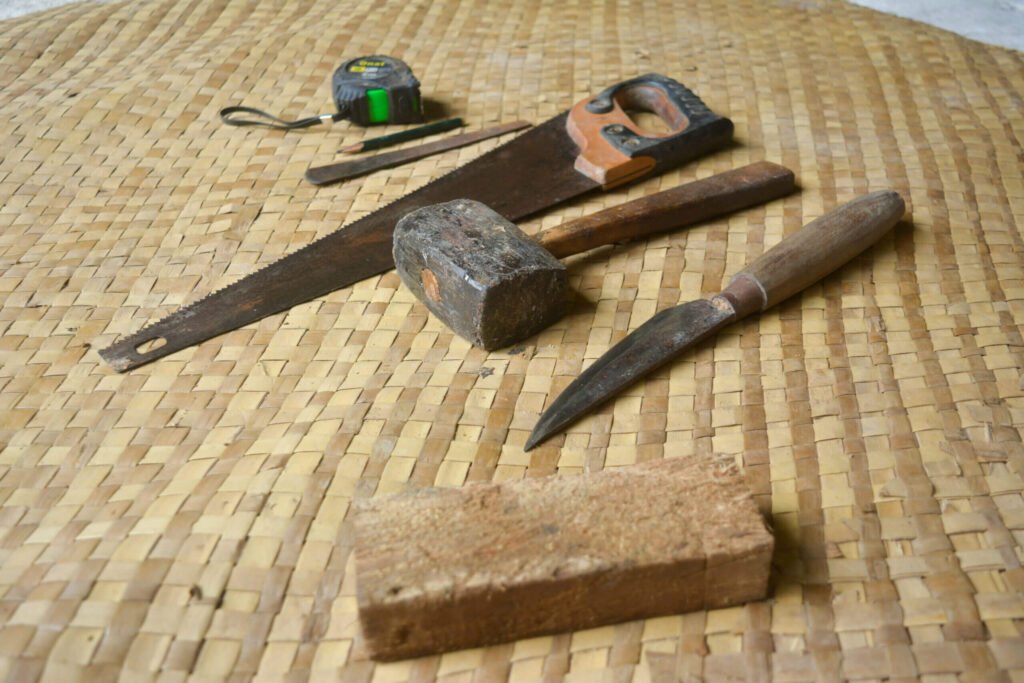
Traditional bamboo carpentry is at the heart of the many structures we have designed here in Bali. Without our skilled carpenters and craftsmen, we would not have been able to design and build the buildings which populate Green School, Green Village and our very own Bamboo U Campus.
In fact, traditional bamboo structures often use the same joinery principles over and over again. This is even true for the most creative, curving and seemingly complex buildings we have constructed over the last 11 years. Our Bamboo U Campus kitchen, Dapur Naga, is a combination of the traditional fish mouth joint (check out our article about the Fish Mouth Joint here) and some orthogonal bolted joints. If it were to be taken apart, Dapur Naga would look like an assemblage of the same joinery systems over and over again. That is the beauty of a handcrafted building, you know exactly how it was made and you can easily understand its construction process.
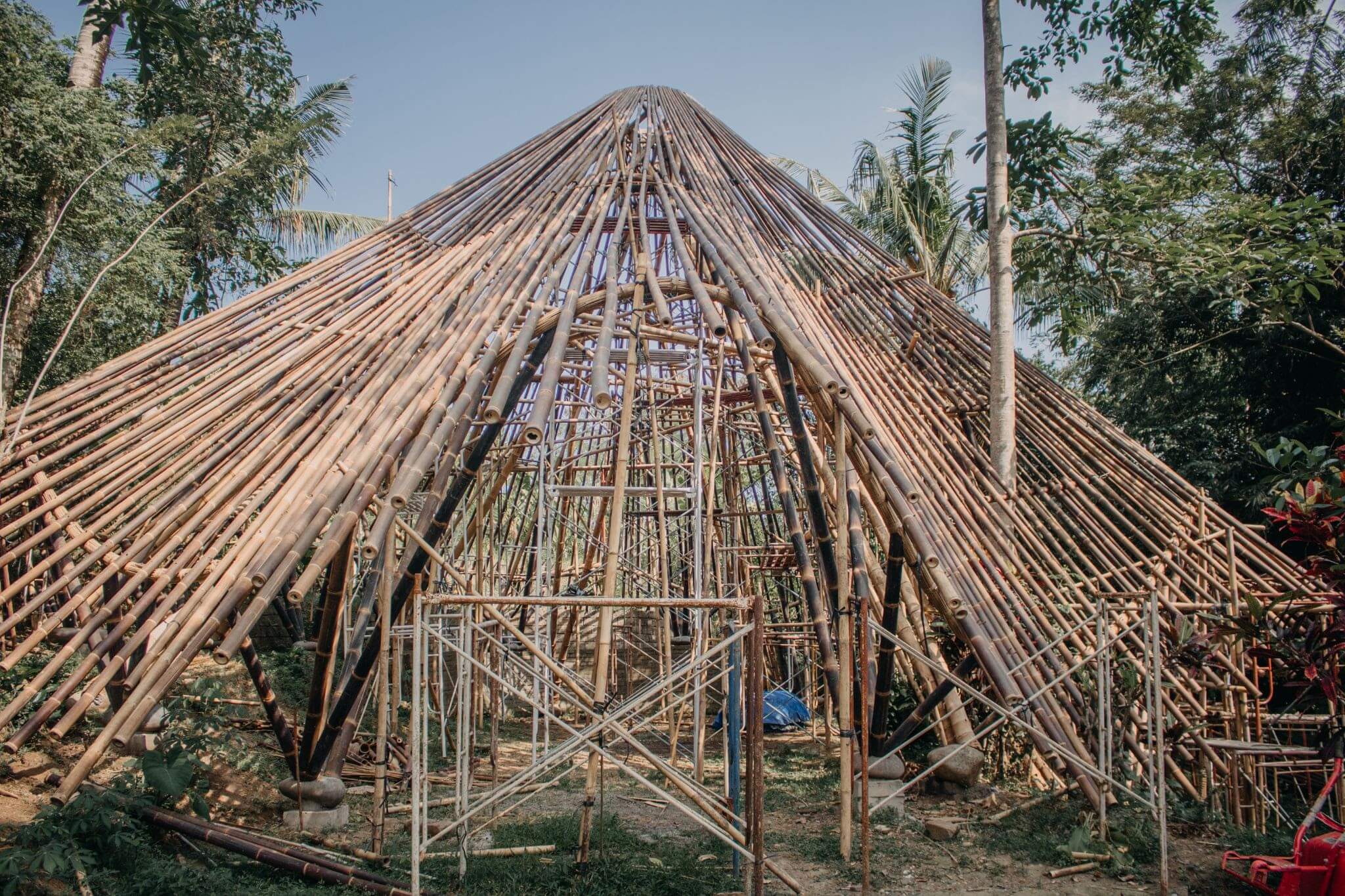
To achieve such a level of quality in these structures, the majority of Balinese carpenters have been practicing the art of bamboo carpentry and joinery for most of their adult lives, if not longer. Their hands have whittled thousands of bamboo dowels, countless intricate joints and touched more bamboo than we could imagine. If that were not impressive enough, they have managed to do so with only a handful of tools.
All the same, an important factor to remember with bamboo carpentry is that you will be working with a tapering, round pole and no two poles are alike. This requires a somewhat specific set of tools, which differ slightly to the tools you might need for wood carpentry. You will need tools which fit the bamboo's round profile and work with the grain of the pole’s fibres rather than against it. In this article, we will discuss which tools are best fitted for traditional bamboo carpentry and what you should be looking for.
For traditional bamboo carpentry, you only need a very limited selection of tools and a bit of practice. Here are the 5 most important tools for traditional bamboo carpentry:
- The Knife
- The Hand Saw
- The Chisel
- The Hammer or Mallet
- Marking and Measuring Tools

The Knife
This is perhaps the most important tool in your bamboo carpentry toolbox. It will help you to split, carve and cut your bamboo into the shape that you want for your joints. Here in Bali, our carpenters use the knife, named “Mutik” in Bahasa Indonesia, to shape Fish Mouth joints, whittle bamboo dowels and widen a chiseled hole. With some practice, this is the tool that you will always go back to when you are working with bamboo.
What to look for:
A knife that has a straight back with a curved blade and one-sided bevel. It should be fitting to you, whether you are right- or left-handed.

The Hand Saw
Saws are particularly useful for cutting perpendicular to the long bamboo fibres as the teeth break through the skin and the grain of the bamboo pole. When used correctly, you will end up having a clean and straight cut through your bamboo pole, an ideal starting point for any traditional bamboo joint. A thinner bladed saw can also be really useful for harvesting bamboo culms inside a clump.
What to look for:
There are two types of woodworking saws, the “push-saws” and the “pull-saws”. They have the same function but only differ in the movement required to manipulate them. Push-Saws require a movement away from the body to engage the teeth into the bamboo’s thick skin. Pull-Saws need the user to pull towards the body. Pull-Saws are thinner and lighter, and can be considered easier to manipulate for carpentry beginners.
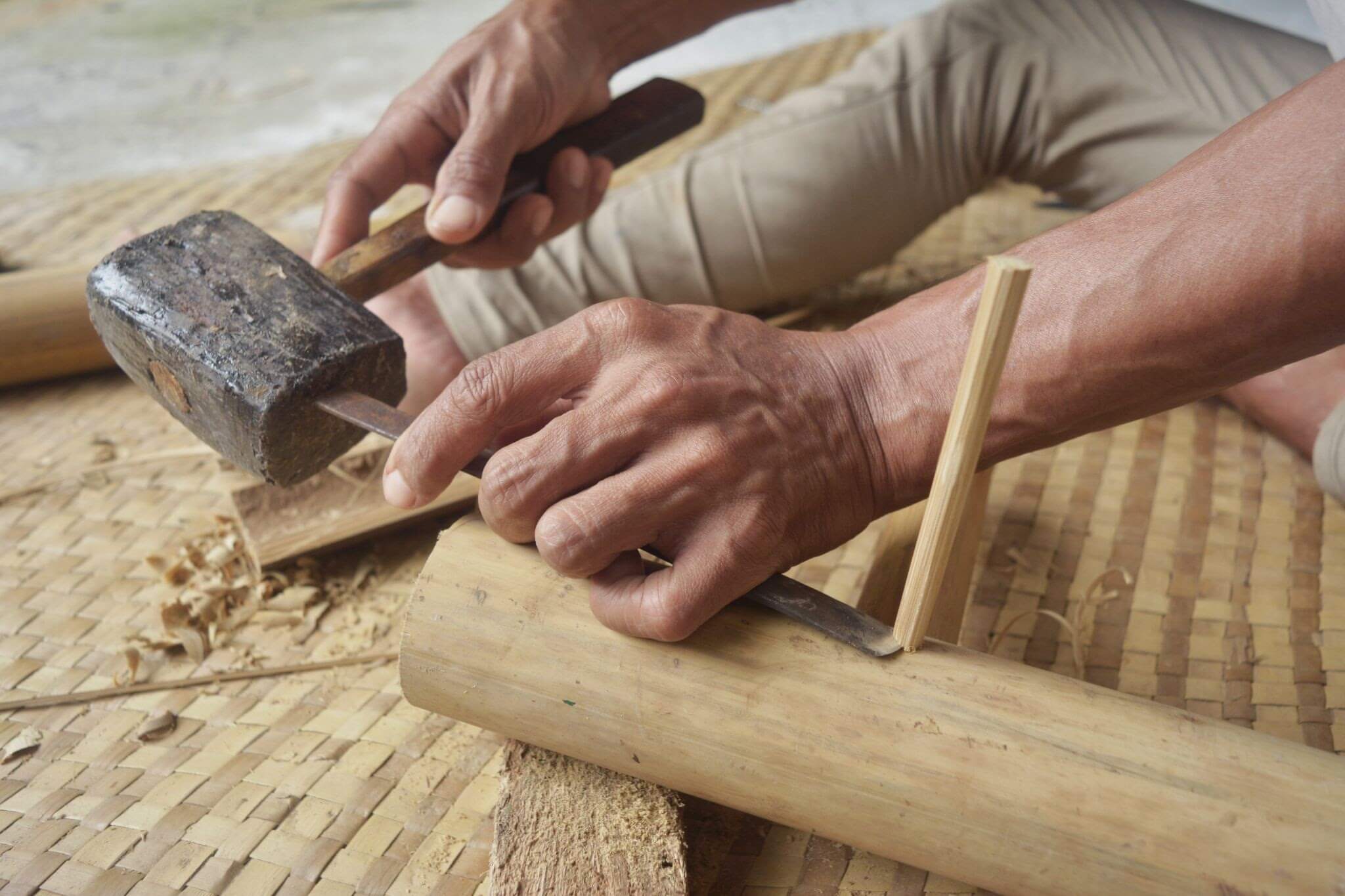
The Chisel
Chisels look like a long knife with a very sharp end. The end of the chisel can have different shapes, whether curved or straight. Chisels are used to create holes in the bamboo pole’s surface. They are ideal at making a dowel fit the hole in the bamboo and vice versa.
What to look for:
You are working with a material that has a round profile, so it goes without saying that you should be looking for a chisel that also has a round tip. To begin with, you can choose a blade with a size of 15-20mm to design anything from furniture to small construction projects.

The Hammer or Mallet
The hammer is useful for applying some force to a tool, like the chisel above, or a joinery element, like a bamboo dowel or pin. The hammer or mallet should have enough weight to it so that you can add a decent amount of strength to your work but it should not limit your ability to shape the bamboo to your design.
What to look for: ideally, you should be looking for a hammer or mallet made of hardwood, as they tend to be more gentle on the bamboo and your tools.

Marking and Measuring Tools
These are the most basic tools in your bamboo carpentry kit but they should not be forgotten nonetheless. A good ruler and a sharp pencil will do wonders to making your joints precise, strong and stiff. These last tools are particularly important to have in construction so that your joints are designed for the bamboo piece you are working with.
What to look for: a sharp pencil with a soft lead (B) to mark the bamboo and draw out measurements. A metal ruler with a minimum length of 30cm that can bend slightly and has very clear markings along its length.
The quality of the tools you use in your bamboo design and construction process will in some ways define the quality of your furniture piece or structure. Though we cannot recommend specific brands due to the changing market and global availability, this small guide should provide you with the necessary information to purchase the 5 basic tools for traditional bamboo carpentry at your local hardware store.
Bamboo carpentry can seem like a daunting task when you are starting to work with bamboo but can be endlessly rewarding with some hard work and practice. If you want to know more about this topic, you can start your own bamboo carpentry adventure right here with us online or in-person in 2022 .

After finishing her Masters of Architecture at the University of Hong Kong where she wrote her thesis about bamboo construction for the rural communities of Bali. Cécile was part of the Bamboo U Team as a Management Consulting Professional until 2023.
OCTOBER 10-21, 2025
The 11 Day Bamboo Build & Design Course in Bali
In 11 days, we'll show you how to build bamboo structures we’ll share all that it takes to build with nature.
Start Anytime
The Bamboo Harvesting Course
The Bamboo Harvesting Course is an online step-by-step training to harvest and care for your bamboo clumps to ensure their longevity and productivity. This maximizes the potential of this beautiful grass as a rapidly renewable resource.Whether you are an architect, builder, or sustainability enthusiast, this mini course will enable you to utilize this rapidly regenerative resource as a durable construction material.It will help remove any fear or doubt about the durability of bamboo and help you build reputable bamboo structures that stand the test of time!









